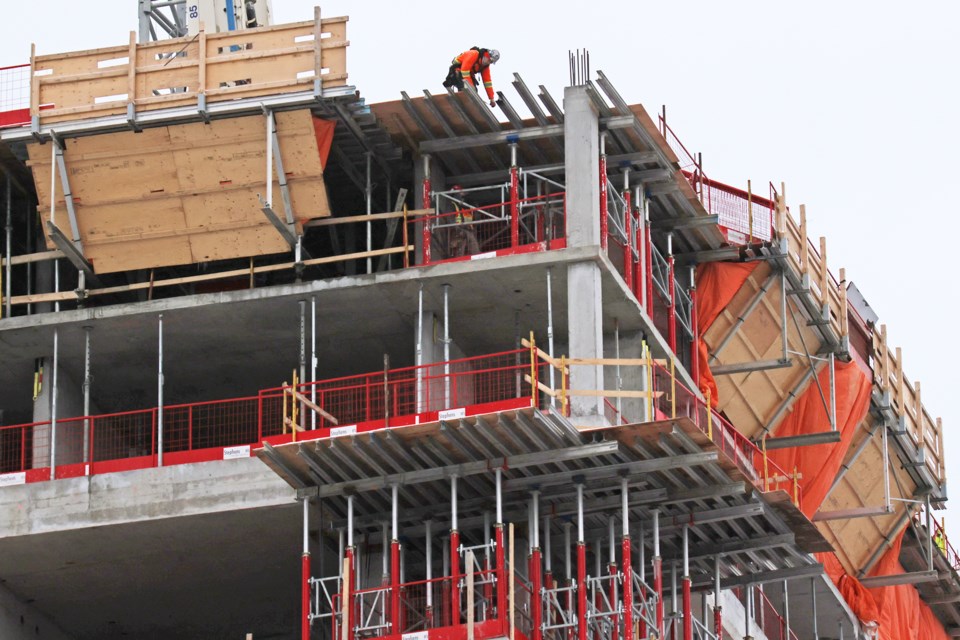Local school boards are still waiting on specific details about new provincial rules for building schools and dealing with surplus land, but the province says the changes will get shovels in the ground on the double.
On Dec. 11, the provincial government announced a new plan to get schools built faster across Ontario, which includes requiring school boards to have land purchased and detailed timelines and budgets ready when they apply to the province to build. The province is also changing the rules when it comes to how school boards will deal with surplus properties on their rosters, with the new rules coming into effect as of Dec. 31.
“The ministry is streamlining their approval process and boards are expected to provide more information upfront at the time we submit our applications for capital priority funding,” said Andrew Keuken, senior manager of planning with the Simcoe County District School Board (SCDSB).
“We are still digging into the text of the regulation and its nuances,” he said.
New school builds are funded through two key streams in Ontario: educational development charges passed on from municipalities pay for the land, and capital priority funding from the province pays for the buildings and construction.
In the past, school boards would mostly finalize land purchases for new schools only after they were given capital priority funding approval from the province.
Under the new system, school boards are now encouraged to purchase land, and compile design plans, timelines and cost estimates as part of their capital priority case sent to the province.
“So the board can hit the ground running if approved,” said Keuken.
The province is estimating this change in procedure will reduce construction timelines by 50 per cent.
According to the province, in Ontario, the average school construction timeline is four to seven years.
At an SCDSB board meeting back in March, Orillia/Severn/Ramara trustee Jodi Lloyd said that the board is not collecting nearly enough through educational development charges to buy the land needed to build schools in Simcoe County at the same rate the population is growing.
She noted at that time that the board has sent letters to the Ministry of Education outlining their concerns on both educational development charges and capital priority funding.
The change in procedure for capital priorities was first brought into the public eye earlier this year when school boards were asked to submit their updated lists of capital priorities this past October.
New to this call were requirements from the province for boards to provide a summary of key project milestones and details about site identification, design plans, project timelines and cost estimates.
Boards were told priority would be given to projects that are considered shovel-ready.
Therefore, this year’s capital priority list from the SCDSB was partially determined by whether the board already had acquired land for the projects, and had a preliminary design completed.
Also new in the provincial application process is a move toward design standardization of schools, where priority would also be given to projects that replicate already-built designs from other areas. Boards are being encouraged to explore innovative ways to build schools, which could include vertical schools (four or more storeys) and podium schools (schools built in mixed-use developments). Where possible, school boards will be re-using school designs and plans that were previously used in their board and from other boards.
To read our full story on which schools made this year’s capital priority list at the SCDSB, click here.
Part of the provincial announcement on Monday was that new regulations would be in place as of Dec. 31 when it came to rules around school boards disposing of surplus property, to help ensure boards had more funds in hand to buy new school land.
Keuken elaborated on which rules are changing and how they will help.
“The main benefit of the new rules will be a streamlined process,” said Keuken.
Under the new regulation slated to change, surplus properties will now be assessed by the provincial government first, to see if the property can be used for other provincial priorities such as in other school boards or converted to be used for long-term care homes or affordable housing.
If there is a match based on need, the boards would work to negotiate a sale to the province at fair market value. If it’s not needed, school boards can then dispose of the property on the open market, with the funds received re-invested into purchasing land for new schools.
A key difference, said Keuken, is under the previous rules there were no timelines or measures associated with the system. Now, if a school board determines it won’t need a surplus property in the next 10 years for accommodation purposes, the ministry will now have the authority to direct them to sell it.
Currently, the SCDSB has five properties it has deemed as surplus:
- St. Paul’s Maintenance Yard (south Barrie)
- Former Tecumseth North Elementary School (Town of New Tecumseth)
- Former Ardrea-Cumberland Beach Public School Annex (Severn Township currently using as maintenance shop)
- Former Duntroon Central Public School (Clearview Township – currently used as maintenance shop)
- Former Byng Public School (Clearview Township – under consideration for development of a new elementary school)



